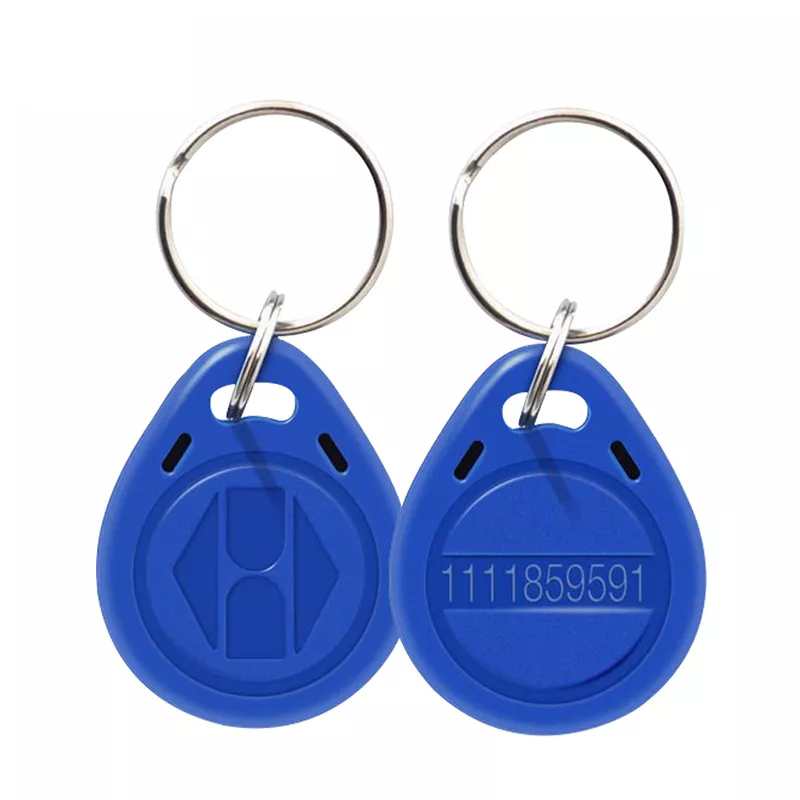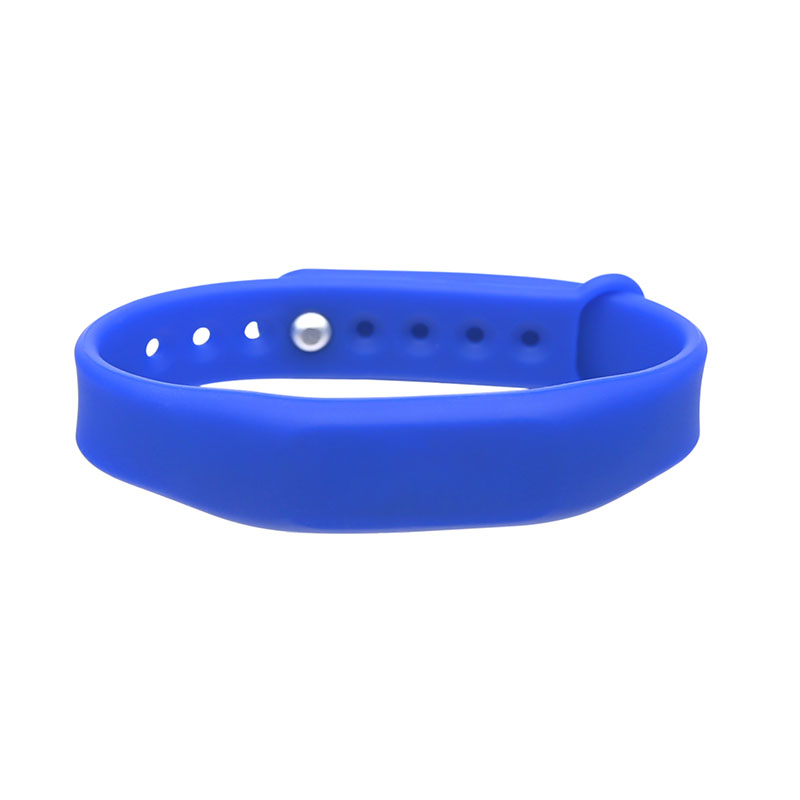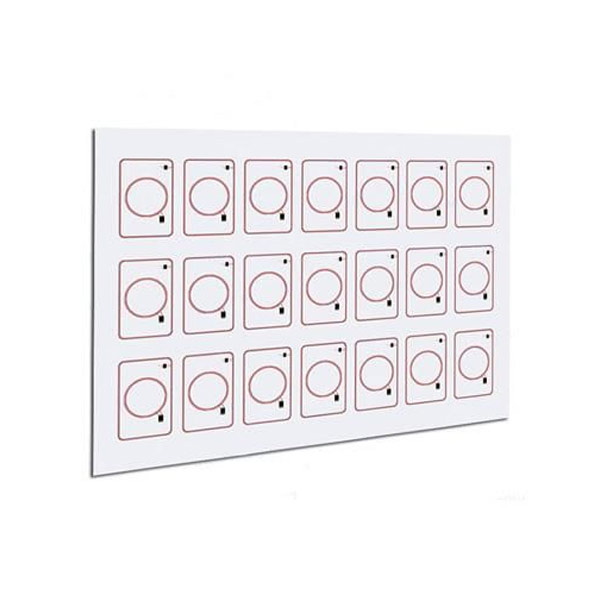With the rapid development of the Internet of Things (IoT), intelligent Access Control systems and automatic identification technology, RFID (Radio Frequency Identification) technology has been deeply integrated into all aspects of our lives. From the office Access Control punch Card, hotel room Card system, to industrial equipment rights Control, pet tracking, RFID is playing an increasingly important role. Especially in the field of identification and Access Control, three forms of RFID keys - Cards, keychains, wristbands, is becoming the most common solution.
This paper will focus on these three mainstream RFID key forms, comprehensively analyze their structural characteristics, technical parameters, typical application scenarios, advantages and disadvantages, and combined with different needs to provide practical advice on the choice, to help businesses and individuals to make informed decisions.
1.What is RFID key
RFID key is a kind of electronic identification equipment embedded with RFID chip and antenna, realizing identification and authority verification through wireless communication with read-write. The electronic tag (i.e. RFID key) contains an internal antenna and a chip. When in the RF field of the reader, the chip receives energy through the antenna and is activated, which in turn interacts with the reader for data. According to the shape and use of different ways, common forms include:
RFID Cards
RFID keychain
rfid wristbands
All three forms have the characteristics of non-contact identification, safety and convenience, support for customized design, etc., and are widely used in many industries.
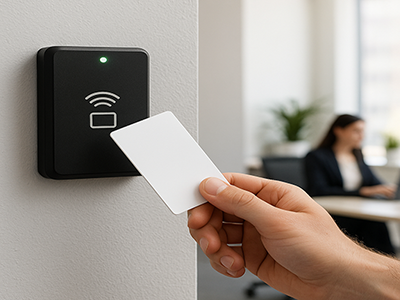
2. RFID Card: traditional and efficient identification tools
Technical structure and working principle
RFID Cards are similar in appearance to bank credit Cards, with RF chips and coil antennas encapsulated inside, usually made of PVC, PET and other plastic materials. Categorized by frequency, it mainly includes:
Low-frequency Card (125kHz): the working distance is less than 10cm, and the data transmission rate is low.
High-frequency Card (13.56MHz): working distance is about 10~15cm, fast transmission rate, support encryption and multi-function expansion.
UHF Card (860~960MHz): working distance can reach several meters, suitable for long-distance identification and inventory management.
Application Scenarios
Access Control system: In enterprises, office buildings, neighborhoods and other places, RFID Cards are widely used as Access Control keys. Users only need to bring the Card close to the Access Control reader to realize identity verification and Access Control opening.
Public Transportation: Bus Cards, subway Cards, etc. usually use high-frequency RFID Cards to support non-contact fast payment, which improves the efficiency of riding the bus.
Consumption and Payment: In shopping malls, supermarkets, restaurants and other places of consumption, RFID Cards can be used as stored value Cards and membership Cards to realize fast consumption and points management.
Medical management: In hospitals, RFID Cards can be used for patient identification, drug management, equipment tracking and so on. (D) Advantages and disadvantages analysis
Advantages.
Low cost, high production efficiency
Easy to unify management and batch distribution
Can be customized pattern and LOGO, enhance the brand image
Disadvantages.
Easily lost or damaged
Need to take it out when using, not as convenient as wearable devices
Not suitable for humidity, bending or high impact environment
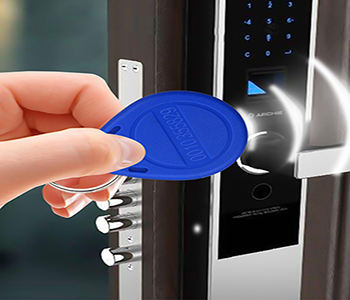
3.RFID keychain: durable and flexible, ideal for industrial applications
Technical structure and features
RFID keychain adopts ABS plastic, resin, metal shell and other materials to encapsulate the chip and antenna, which can be used as a keychain Accessory. Some models are IP protected for harsh environments. It supports low frequency, high frequency and ultra-high frequency communication bands.
In addition, some high-end keychains are equipped with batteries (active type), which can enhance the reading distance and function expansion (such as location tracking, Bluetooth communication, etc.).
Application Scenarios
Access Control: As part of a keychain, RFID key fobs are convenient for users to carry, and are commonly used in Access Control systems in homes, offices, warehouses and other places.
Vehicle management: In parking lots and garages, RFID key fobs can be used for vehicle identification and automatic charging. When the vehicle enters the parking lot, the reader installed at the entrance reads the information of the key fob and automatically lifts the pole to release the vehicle; when the vehicle leaves the parking lot, the system calculates the cost and deducts the fee according to the parking time.
Equipment operation rights: In the industrial field, some important equipment (such as CNC machine tools, construction machinery, etc.) need to operate rights management, RFID key fob can be used as the operator's identity credentials. Only the key fob with corresponding authority can activate the equipment, preventing unauthorized personnel from operating and improving the safety and management efficiency of the equipment.
Pet tracking: RFID keychain tags can be installed on pets to realize identification and location tracking of pets. When the pet is lost, the tag information can be read through the reader, the pet owner can be quickly contacted to improve the chances of pet recovery.
Advantages and disadvantages analysis
Advantages.
Easy to carry, fit users' daily habits
Resistant to falling, waterproof, high temperature, suitable for harsh environments
Easy to tie into employee or vehicle identity
Disadvantages.
Active key fobs are costly and require regular battery replacement
Some case designs may affect signal strength or identification efficiency
Functions are more centralized, limited expandability

4. rfid wristbands: easy to wear, designed for special scenarios
Technology and structure design
rfid wristbands integrate flexible materials and electronic packaging technology, with good comfort and durability. Common materials include silicone, fabric, nylon, TPU and so on. Embedded with high-frequency or low-frequency RFID chips, the flexible antenna package is adaptable to daily wear and exercise under the state of bending and washing.
According to the use can be divided into disposable wristbands and reusable wristbands:
Disposable wristbands: Suitable for short-term activities, to prevent the transfer of borrowing and forgery.
Reusable wristbands: Used in hotels, gyms and other long-term scenarios, easy to disinfect and clean.
Application Scenarios
Hotels and resorts: In hotels, rfid wristbands can be used as room Cards, users can wear wristbands to open the door of the room, use the gym, spend money in the restaurant, etc., without the need to carry multiple Cards, convenient and fast.
Water parks and swimming pools: Due to the humid environment, traditional Cards and keychains are easily damaged, and the waterproof nature of rfid wristbands makes them the first choice.
Sporting events and concerts: rfid wristbands can be used for spectator identification, ticket validation, and consumer payment at large sporting events and concerts. Disposable wristbands can also effectively prevent ticket counterfeiting and reuse, ensuring the safe and orderly conduct of the event.
Medical care: In the hospital's intensive care unit (ICU), neonatology and other special departments, rfid wristbands can be used for patient identification to ensure the accuracy of medication, treatment and other operations.
Gyms and clubs: Members wearing rfid wristbands can quickly enter gyms, use lockers, buy personal training courses, etc., simplifying the process and improving management efficiency.
Advantages and Disadvantages Analysis
Pros.
Wear it in a natural way, freeing up your hands
Highly waterproof, suitable for wet and outdoor use.
Comfortable and soft, suitable for children and long-term wearers
Certain designs have fashionable attributes that can increase user satisfaction
Disadvantages.
Data reading distance is limited, not suitable for long-distance identification.
Aesthetics are limited by materials and construction
Risk of allergy or discomfort for long-term wear
5. Comparison of three RFID key forms
| Comparison Items | RFID Card | RFID Keychain | RFID wristband |
| Format | Card shape, standard size | Keychain shape, compact and portable | wristband shape, adjustable length |
| Frequency range | Low, high, UHF | Low, high, UHF | Low, high |
| Security | Higher high frequency, lower low frequency | Similar to Card Similar to Card | Similar to Card Similar to Card |
| Durability | Medium, easy to wear and tear | Higher, drop resistant and waterproof | Higher, waterproof and bend resistant |
| Suitable environment | General environment, indoor and outdoor general use | Severe environment, industrial, outdoor | Humid, sports and other special environments |
6. How to choose RFID keys according to actual needs?
Application scenario-oriented selection
General office, transportation Card: Choose standardized RFID Cards, low cost, easy to deploy
Industrial equipment Control and employee management: RFID key fobs are more durable and suitable for industrial environments.
High humidity, high motion places: rfid wristbands are waterproof and hands-free to enhance the user experience.
Function and performance oriented
Large identification range: Choose UHF RFID Cards or key fobs.
Need high security cryptographic authentication: High frequency (13.56MHz) is the best choice, supporting cryptographic authentication.
Attention to aesthetics and comfort: rfid wristbands are suitable for children, the elderly, sports enthusiasts and other special user groups.
Cost and maintenance considerations
Disposable scenario: Recommended to choose disposable rfid wristbands or inexpensive Cards
Reuse and long term maintenance: keychains or silicone wristbands are more durable
Don't want users to replace batteries: choose passive RFID products to avoid maintenance costs.
7. Future development trend and integration direction
With the further development of intelligentization, Internet of Things, big data and other technologies, RFID key products will continue to integrate other functions and technologies, the main trends include:
Multi-technology fusion
Combination with Bluetooth, NFC, GPS, Wi-Fi to achieve remote tracking, data synchronization, automatic linkage Control
Integration of sensor functions (e.g. temperature, position sensing) to adapt to a wider range of industrial and medical scenarios
Appearance design and humanization enhancement
As smart wearable devices, rfid wristbands will take into account both appearance and functionality in the future, and add fashion elements.
RFID keychain and wristband products may be combined with smart bracelets and smart watches to form hybrid devices.
Customization and security upgrade
RFID Cards that support biometric integration (e.g. fingerprints, palm veins) will gradually become popular
Higher security encrypted communication protocols (e.g. AES, DES encryption) will be widely deployed in high security scenarios
8. Conclusion
In practical applications, users should choose the appropriate form of RFID key based on specific application scenario needs, performance requirements and user experience. With the continuous progress of technology, these three forms will be continuously optimized and innovated to provide more efficient and secure solutions for intelligent management and convenient life in various industries. Whether it's an enterprise deploying an Access Control system or a consumer choosing a convenient identification tool, an in-depth understanding of the features and advantages of these three RFID key forms will help make more appropriate decisions and fully utilize the value of RFID technology.


